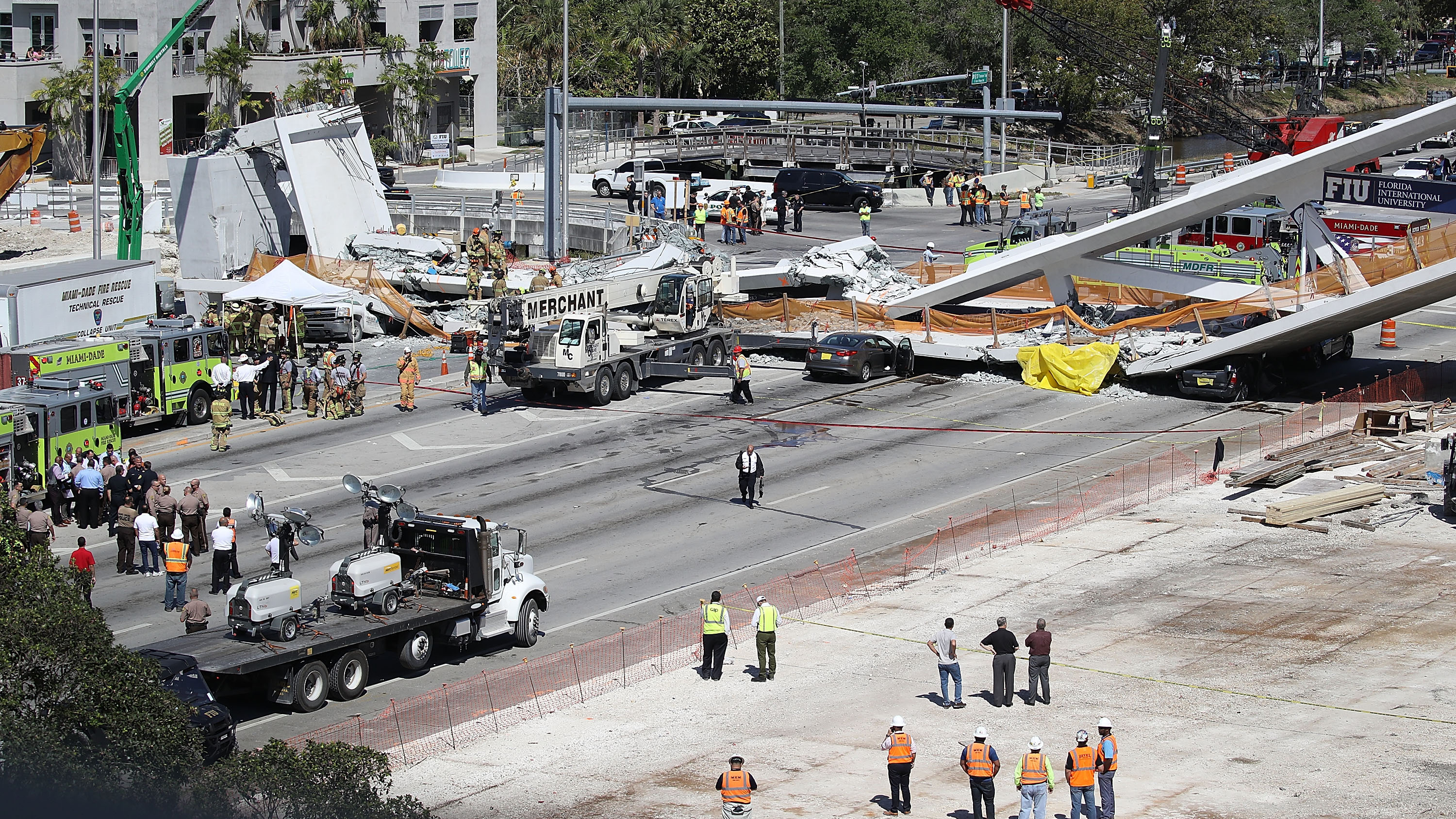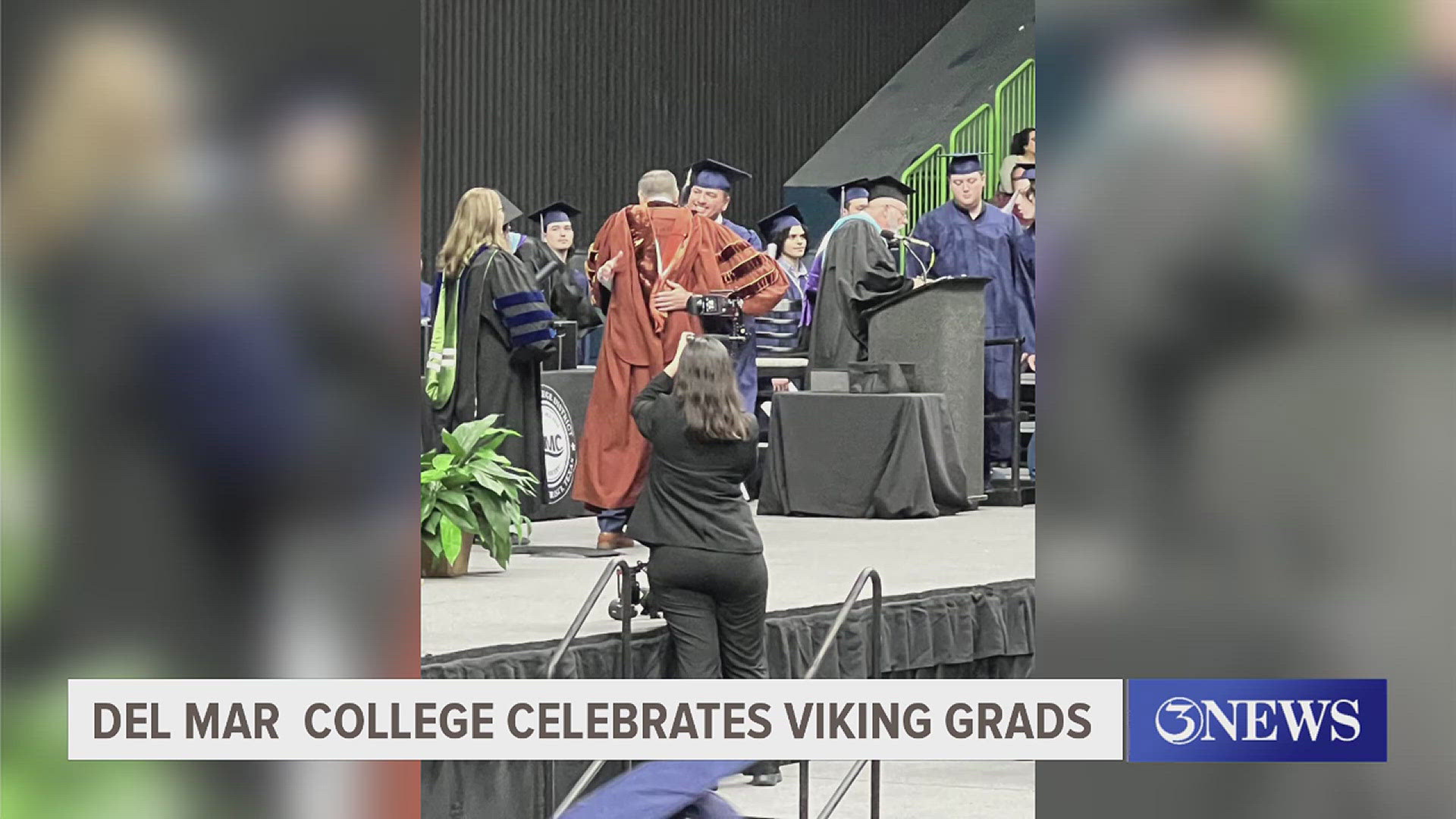An engineer left a voicemail two days before a catastrophic bridge failure in Miami to say some cracking had been found at one end of the concrete span, but the voicemail wasn't picked up until after the collapse, Florida Department of Transportation officials said Friday.
The voicemail left on a landline wasn't heard by a state DOT employee until Friday because the employee was out of the office on an assignment, the agency said in an email.
In a transcript released Friday night, Denney Pate with FIGG Bridge Group says the cracking would need repairs "but from a safety perspective we don't see that there's any issue there so we're not concerned about it from that perspective."
The pedestrian bridge at Florida International University collapsed Thursday, killing at least six people. Authorities are slowly removing the debris, looking for more victims. Miami-Dade Police said via Twitter that two vehicles were pulled from underneath the bridge Saturday. Police did not say whether victims were inside.
On Saturday, FIU released a statement saying the representatives from the university and DOT met with a FIGG engineer for two hours Thursday morning to discuss the cracking and determined there wasn't a safety issue.
"The FIGG engineer of record delivered a technical presentation regarding the crack and concluded that there were no safety concerns and the crack did not compromise the structural integrity of the bridge," FIU said.
At a news conference Friday night, officials from the National Transportation Safety Board said they have just begun their investigation, and cannot yet say whether any cracking contributed to the collapse. They also said workers were trying to strengthen a diagonal member on the bridge when it collapsed.
Robert Accetta, the investigator-in-charge for the NTSB, said crews were applying post-tensioning force, but investigators aren't sure if that's what caused the bridge to fall.
In a news release late Friday, FIGG Bridge Engineers said it "continues to work diligently" to determine the cause of the collapse, and is examining the steps its team has taken. It added, "The evaluation was based on the best available information at that time and indicated that there were no safety issues." It also asked for time to accurately determine what led to the accident.
A college student who narrowly escaped from a car that got smashed in the collapse said he watched helplessly as the structure tumbled down atop the vehicle and killed his friend Alexa Duran, who was sitting next to him in the driver's seat.
Richie Humble, who studies at FIU, was riding in a car under the pedestrian bridge when he heard a long creaking noise coming from the structure that spanned a busy Miami-area highway. It sounded different from anything he had ever heard before.
"I looked up, and in an instant, the bridge was collapsing on us completely. It was too quick to do anything about it," Humble said Friday in a phone interview with The Associated Press.
Once Humble realized he was alive, he also realized that he could not get to Duran. He called to her but got no response. A group of men outside the car started yelling at him to try crawling through the rear window.
He couldn't squeeze through because the window was crushed. The men outside grabbed a wooden plank and pried open the rear door to pull him free, he said.
"I was trying to get people to realize my friend was still in there," he said.
He suffered cuts to his leg from glass and a slight fracture to a vertebra, but he was able to walk away from the scene.
While families waited for word on their loved ones, investigators sought to understand why the 950-ton bridge gave way during construction. The cables supporting the span were being tightened following a "stress test" when it collapsed, authorities said.
The Florida DOT said in its Friday release that it had not been notified of any stress test.
Detectives declared the rubble a homicide scene.
Scheduled to open in 2019, the bridge would have provided safe passage over a canal and six lanes of traffic and created a showpiece architectural feature connecting the campus of FIU with the community of Sweetwater, where many students live.
The $14.2 million project was supposed to take advantage of a faster, cheaper and safer method of bridge-building promoted by the university.
Authorities have not confirmed the victims' names. Duran's family has said she died. The fatalities included a student at FIU. One person died at a hospital. Miami-Dade Police Director Juan Perez said five bodies were located with the help of cameras but had not yet been retrieved.
In a Facebook post, Chelsea Brownfield said she was awaiting any information about her husband, Brandon. According to a Go Fund Me page set up for the family, Brandon Brownfield was driving home from work when the collapse happened.
"The outpouring of love we have received is incredible," Chelsea Brownfield wrote. The post ended with the hashtag "praying for a miracle."
Brownfield declined to comment in a message to The Associated Press.
Jorge and Carol Fraga feared their relative's car was trapped beneath the bridge. Jorge's 60-year-old uncle, Rolando Fraga, lives in the area and frequently takes the nearby turnpike to work, but no one has heard from him since midday Thursday.
"The waiting is so ... I don't have words for that," Carol Fraga said through tears.
The bridge was put in place March 10, five days before the collapse.
When finished, the span would have been supported from above, with a tall, off-center tower and cables attached to the walkway. That tower had not yet been installed, and it was unclear what builders were using as temporary supports.
___
Associated Press writers Tim Reynolds, Josh Replogle, Freida Frisaro and Curt Anderson in Miami; Jason Dearen in Gainesville; Tamara Lush in St. Petersburg and Rodrique Ngowi in Boston contributed to this report.


